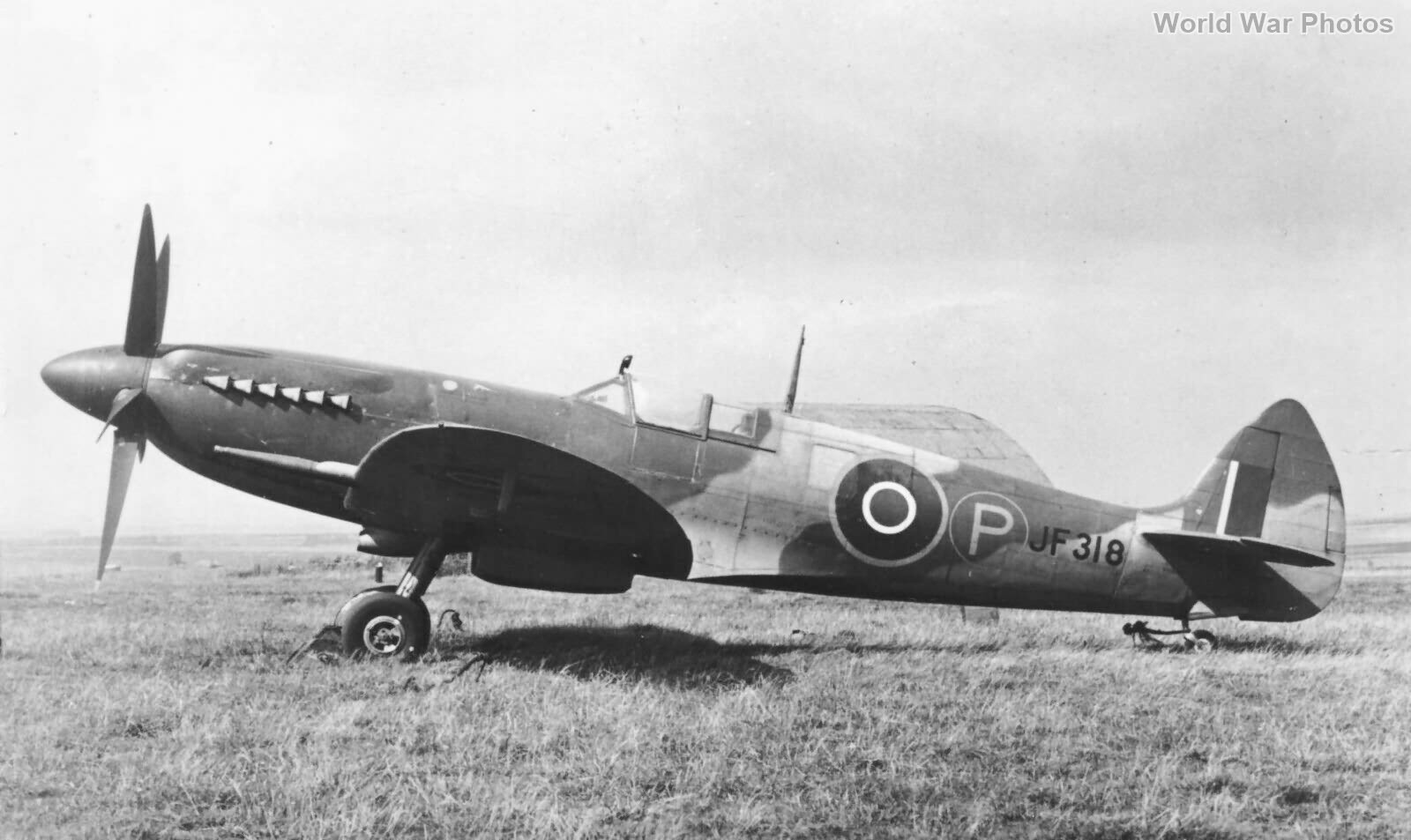Advanced Griffon-Engined Spitfire: Mk.XIV
The development of the Griffon-powered Spitfire continued with the Mk.XIV, a significant leap in performance and capability.
Design and Features
- Engine and Propeller: The Mk.XIV was powered by a Griffon 65 engine with an intercooled two-speed/two-stage supercharger, driving a five-bladed propeller.
- Airframe Adjustments: The new, more powerful engine necessitated a longer nose, which required a new fin and broader rudder to maintain balance.
- Additional Features: The Mk.XIV included a retractable tailwheel and the wing fuel tanks and revised ailerons from the Mk.VIII.
Prototypes and Development
- Initial Prototypes: Six converted Mk.VIIIs served as prototypes for the Mk.XIV, with the first flying in March 1943.
- First True Mk.XIV: The first production Mk.XIV flew in October 1943, with squadron service beginning in January 1944.
Variants
- Standard F.XIV: Featured the ‘C’ wing and the traditional Spitfire canopy.
- F.XIVE: Equipped with the ‘E’ wing (with some aircraft having clipped wings for low-level operations) and a bubble canopy in later production models.
- FR.XIVE: Designed for low-level fighter/tactical reconnaissance, this variant had clipped wings, a bubble canopy, an oblique camera in the rear fuselage, and an additional rear fuselage fuel tank.
Operational Performance
- Combat Effectiveness: The Spitfire XIV was extremely fast at all altitudes, highly maneuverable, and boasted an impressive rate of climb. It proved to be the equal of any other fighter of the time.
- Against Jets: The Mk.XIV had success against jet aircraft, including the first Messerschmitt Me 262 jet fighter to be shot down in October 1944.
- V-1 Flying Bombs: It was highly effective against V-1 flying bombs, claiming over 300 of them.
- Attack Role: The Mk.XIV also excelled as an attack aircraft, flying with the 2nd Tactical Air Force in Europe.
Service
- Deployment: More than 30 RAF and Commonwealth squadrons were equipped with the Mk.XIV. Despite its interim designation until the delayed Spitfire 21 entered service, the Mk.XIV proved to be a critical and effective aircraft during its operational period.
The Spitfire Mk.XIV, with its advanced Griffon engine and refined design, marked a high point in Spitfire development, providing exceptional performance and versatility in various combat roles during World War II.
